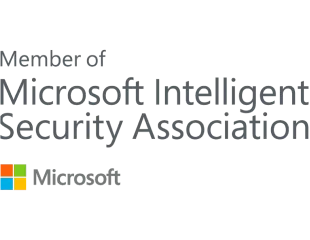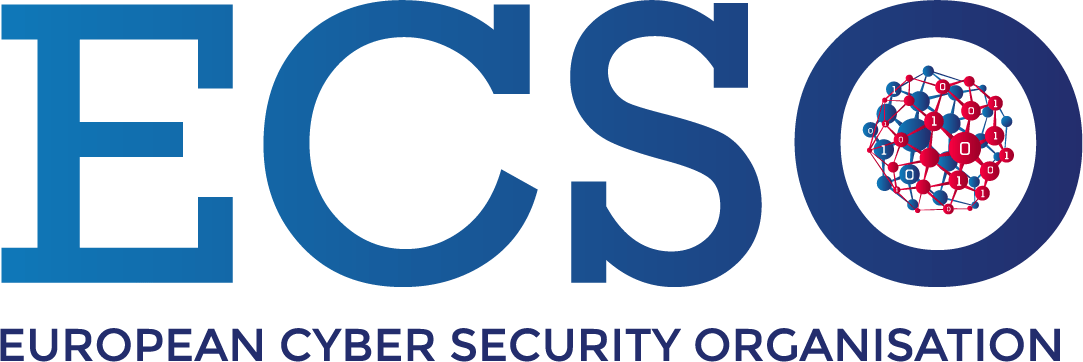Blog Post
Kovrr’s New Quantified Cyber Risk Register Fuels Data-Driven Decisions
April 14, 2025
Cybersecurity governance, risk, and compliance (GRC) programs today serve as the backbone of enterprise security, helping organizations holistically manage threats, enforce policies, and maintain regulatory compliance, all while advancing the business mission. Typically, to keep track of the plethora of activities involved in this endeavor, security and risk managers (SRMs) will employ risk registers - structured repositories that document the potential scenarios the organization may face in the context of cyber GRC.
However, traditional cyber risk registers, rooted in spreadsheets and reliant on static reporting methods, often fail to provide data, such as quantified information, necessary for optimized initiative prioritization, leaving businesses vulnerable to high-likelihood, high-impact loss incidents. Indeed, without the ability to leverage this type of data, SRMs struggle to accurately assess which cyber risk scenarios will have the greatest financial impact, making it additionally difficult to allocate resources efficiently and justify cybersecurity expenditure to executives.
In this vein, Kovrr is pleased to release its new quantified cyber risk register, redefining how organizations document and manage their cyber GRC program initiatives. With the quantified insights embedded directly into the risk register, SRMs will have the ability to assess risk scenarios through a financial lens, making it easier to pinpoint which threats require immediate action. This deeper level of analysis empowers security teams to make more strategic decisions that balance risk reduction with business objectives and ensure cybersecurity investments deliver tangible value.
Breaking Down the Components of Kovrr's Quantified Cyber Risk Register

Kovrr's quantified cyber risk register is designed to provide SRMs with actionable intelligence, including financially measurable insights into each documented risk scenario. The register contains a range of critical elements that equip teams to evaluate risk on a granular level and, consequently, determine the most effective response strategies. With a cyber risk register powered by quantification, organizations can take a more structured approach to managing risk, ensuring that mitigation efforts align with actual exposure.
Descriptors and Custom Risk Scenario Creation

Each risk scenario can be clearly defined and categorized, thereby ensuring it is properly recorded and traceable within the organization’s cyber risk register. The descriptors include:
- Modeling Entity: The asset, department, or business unit linked to the scenario. Businesses will often run quantifications for different organizational entities, and this option allows SRMs to evaluate scenarios specific to such contexts.
- Scenario ID: A unique identifier assigned to the scenario. The ID helps cyber GRC leaders easily track risks, distinguish between similar use cases, and reference specific scenarios during the analysis process, making it easier to monitor changes.
- Scenario Name: The designated title of the risk. It will often be higher-level, giving risk register users an overview of the situation. A well-structured name helps SRMs quickly identify the name of the risk and, therefore, streamline analysis and decision-making.
- Description: A summary providing more in-depth details of the nature and context of the scenario. SRMs can use this section to outline key factors and document relevant background information to strengthen the risk assessment process.
- Likelihood (Qualitative): The estimated probability of the risk scenario taking place, expressed as rare, unlikely, possible, likely, or expected. This perspective offers a broad risk outlook and complements the numerical likelihood forecasts.
- Impact (Qualitative): The severity of the damage should this risk scenario occur, ranging from negligible to severe. This qualitative descriptor allows risk managers to contextualize how disruptive the incident would be to the organization.
- Initial Attack Vectors: For customized cyber risk scenarios, initial access vectors represent the ways in which potential threats could gain entry into an organization’s systems. This capability allows SRMs to drill down to more specialized scenarios.
It is also possible, when creating a new quantified risk scenario, to drill down into its potential impact with granular precision. Users can define event types and impacts, such as interruption, data breaches, or ransomware, or alternatively modify scenarios according to financial loss types, such as regulation and compliance fees. Further customization includes adjusting the number of data records compromised, event durations, and event costs.
Financial Loss Estimates, Scenario Modeling, and Peer Base Rate

Kovrr’s on-demand cyber risk quantification (CRQ) model provides detailed financial impact forecasts to help risk managers and cyber GRC leaders assess potential losses under different conditions. This part of the cyber risk register highlights both the likelihood of a specific scenario occurring and the associated financial implications, specifically including:
- Average Financial Loss: The average severity of the consequences of the scenario, should it materialize. This figure helps SRMs gauge their exposure level and identify the most effective course of action to mitigate potential monetary impact.
- Annual Likelihood: The probable range of the scenario occurring within the upcoming year. For example, in the figure above, the organization faces a 10% annual likelihood of experiencing a data breach due to a phishing attack.
- Peer Base Rate: This metric provides organizations with industry-wide benchmarking data, allowing them to assess how their specific scenario exposure compares to similar businesses.
- Scenario Loss 99% (Minimum): The lowest estimated financial loss according to the simulations, representing a more optimistic scenario during which minimal damage occurs.
- Scenario Loss 75%: A lower-end financial loss estimate, representing a best-case scenario with some uncertainty. This projection may help SRMs assess how losses may fluctuate when mitigation efforts partially succeed.
- Scenario Loss 50% (Median): The midpoint loss financial estimate, providing a balanced perspective. This figure reflects the most probable outcome across thousands of simulated scenario variations, making it a key reference point for strategic planning.
- Scenario Loss 25%: A higher-end estimate showing potential losses under more severe conditions, taking into account possible scenarios in which key controls fail or external circumstances escalate the overall financial consequences.
- Scenario Loss 1% (Maximum): The worst-case financial loss projection. The scenario loss maximum assists organizations in preparing for catastrophic events that have devastating effects and offers a sobering yet critical perspective of risk.
Damage Types

The Damage Types section of the cyber risk register provides a breakdown of the average financial loss associated with the scenario, categorizing the different cost components that contribute to the total impact, such as lost income, business interruption forensics, recovery expenses, public relations repairs, and extortion payments. Understanding these cost drivers allows SRMs to refine mitigation strategies and allocate resources more effectively.
Risk Management

This section of Kovrr's CRQ-powered cyber risk register ensures that each identified scenario is proactively managed, regardless of its associated course of action. Here, security and risk managers have the ability to assign risk project owners and easily track mitigation efforts. This capability ensures accountability and ongoing visibility. Additional information includes:
- Risk Priority: The assigned urgency level of risk (low, medium, high, or critical). It's often associated with its potential impact on the organization.
- Response Plan: The designated action to address the risk. Response plans include strategies such as "accept," "avoid," "mitigate," or "transfer," depending on the risk's nature and the organization's policies.
- Ticket: A direct link to the organization’s internal ticketing or workflow system. This provides an easy way to track relevant updates and communications related to the scenario.
- Creation Date: The date the scenario was first documented in the cyber risk register, allowing for lifespan monitoring and equipping SRMs to evaluate the effectiveness of response plans over time.
- Last Edited Date: The most recent date the scenario entry was updated. Keeping track of the last edit date ensures scenarios reflect the latest assessments and organizational updates.
Security Controls and CRQ-Powered Recommendations

In this section, organizations can identify the controls most strongly associated with the loss scenario. The Relevant Controls area allows SRMs and GRC leaders to manually enter those that they know will be most impactful. The Controls Recommendations feature, on the other hand, is generated by Kovrr’s CRQ models and offers data-driven insights into which controls would yield the greatest reduction in financial exposure. For example, in the figure above:
- Implementing CIS Control 17 (Incident Response Management) at IG1 is forecasted to reduce financial risk by $16,568, representing an 8.72% decrease in potential losses.
- Enhancing Access Control Management (CIS Control 6) to IG1 is expected to lower financial exposure by $13,148 (6.92%).
- Upgrading Data Protection (CIS Control 3) from IG1 to IG2 can result in a $9,139 reduction (4.81%) in risk exposure.
Simulation Events Examples

Every risk scenario can unfold in multiple ways, each with varying degrees of financial impact, duration, and scope. When a scenario is powered by Kovrr's CRQ models, however, organizations have the ability to explore these variations and assess how different factors influence the outcomes. The Simulation Event Examples table provides a range of possible loss scenarios, ranging from minimal to extreme loss, offering deeper insights into how the same risk event can play out under different conditions.
Upon analysis, SRMs can better comprehend the potential severity, associated attack surfaces, and data exposure levels pertaining to a specific simulated risk. This understanding enables teams to develop response plans and mitigation strategies that can account for both the best-case and worst-case situations. With this level of detail, organizations can approach cyber risk management with greater precision and confidence.
Notes and Related Documentation

The Notes section provides a centralized space for SRMs to record relevant updates and attach corresponding files. This feature allows stakeholders to access the latest information about the scenario without needing to leave the platform or reach out to external parties. Uploaded reports, policy changes, and internal reviews remain easily traceable and keep risk management efforts organized, bolstering alignment across teams and maintaining a clear historical record of risk-related actions.
Methodology Insights

To enhance transparency and confidence in the quantified results, Kovrr includes Methodology Insights, providing key statistical measurements behind the analysis. The Sample Size, which is 2,780 in the example above, highlights that risk assessments are grounded in a robust dataset, fostering a well-rounded evaluation as opposed to relying on isolated incidents. The Coefficient of Variation (0.15) is a metric that signals result consistency across simulations, with lower values reflecting higher reliability.
Non-CRQ-Powered Risk Scenarios
Although certain cyber risk scenarios are common across the market, such as data breaches, organizations still have their own set of unique risks, some of which require expert insight to assess accurately. Consequently, within Kovrr’s cyber risk register, cybersecurity leaders also have the option to include non-CRQ-powered GRC scenarios. These scenarios can be assigned owners, linked to relevant controls, and tracked alongside quantified risks to ensure a comprehensive approach to cyber GRC. The only difference is that they do not automatically include financial quantification or modeled loss estimates.
Enhancing GRC with Data-Driven Risk Intelligence and Quantification
Kovrr's CRQ-powered cyber risk register offers CISOs, SRMs, and GRC leaders a structured approach to managing every aspect of cybersecurity. Every scenario that is backed up by data-driven, quantified insights directly helps key stakeholders focus on mitigating the threats that have the most severe potential impact on their organization. With a quantified perspective, decision-making shifts from guesswork to a process grounded in objective, real-world intelligence that's justifiable at the board level.
Moreover, moving beyond traditional risk and compliance documentation allows security teams to gain a clearer understanding of how threats may materialize, the financial consequences involved, and the specific controls that will reduce this exposure most effectively. Unlike static repositories, a dynamic, quantified risk register facilitates action and ensures that program initiatives align with broader business objectives. Adopting such an approach ensures that organizations manage cybersecurity with the utmost precision, allocating resources to where they will have the greatest impact.
Sign up today to get started with Kovrr's CRQ-powered cyber risk register and learn more about integrating quantified insights into your cyber GRC strategy.





.webp)


.jpg)
